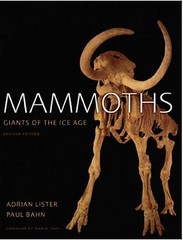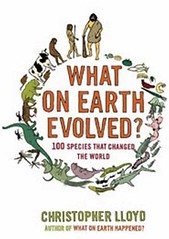tags: Birdbooker Report, bird books, animal books, natural history books, ecology books
"How does one distinguish a truly civilized nation from an aggregation of
barbarians? That is easy. A civilized country produces much good bird
literature."
--Edgar Kincaid
The Birdbooker Report is a special weekly report of a wide variety of science, nature and behavior books that currently are, or soon will be available for purchase. This report is written by one of my Seattle birding pals and book collector, Ian "Birdbooker" Paulsen, and is edited by me and published here for your information and enjoyment. Below the fold is this week's issue of The Birdbooker Report which lists ecology, environment, natural history and bird books that are (or will soon be) available for purchase.
New and Recent Titles:
-
 Gibbons, Whit and Judy Greene. Turtle: The Animal Answer Guide. 2009. Johns Hopkins University Press. Paperback: 163 pages. Price: $24.95 U.S. [Amazon: $16.47].
Gibbons, Whit and Judy Greene. Turtle: The Animal Answer Guide. 2009. Johns Hopkins University Press. Paperback: 163 pages. Price: $24.95 U.S. [Amazon: $16.47].
SUMMARY: The authors provide complete answers to the most frequently asked questions about the more than 300 turtle, tortoise, and terrapin species of the world. They discuss a broad range of turtle topics, including behavior, ecology, reproduction and development, turtle-human relationships, and the appearance of turtles in popular literature. The book is illustrated with black-and-white and color photographs.
RECOMMENDATION: A good general introduction to turtle biology and ecology. -
 Lister, Adrian and Paul Bahn. Mammoths: Giants of the Ice Age (revised edition). 2009. University of California Press. Paperback: 192 pages. Price: $19.95 U.S. [Amazon: $15.56].
Lister, Adrian and Paul Bahn. Mammoths: Giants of the Ice Age (revised edition). 2009. University of California Press. Paperback: 192 pages. Price: $19.95 U.S. [Amazon: $15.56].
SUMMARY: This book explores the world of the mammoths. Its five chapters are: Origins, Mammoths Unearthed, The Natural History of Mammoths, Mammoths and Human Culture and Extinction. It's very well illustrated.
RECOMMENDATION: This title is a good general introduction to the mammoths. -
 Lloyd, Christopher. What On Earth Evolved? 100 Species That Changed The World. 2009. Bloomsbury. Hardbound: 416 pages. Price: $45.00 U.S. [Amazon: $29.70].
Lloyd, Christopher. What On Earth Evolved? 100 Species That Changed The World. 2009. Bloomsbury. Hardbound: 416 pages. Price: $45.00 U.S. [Amazon: $29.70].
SUMMARY: This book is divided into two sections: Before Man and After Man. The author explores the most significant creatures that evolved on earth prior to humans and then explores how the co-evolution of humans and other key species has transformed the planet over the last 12,000 years. My favorite species include: Hamster, trilobite, Tiktaalik and Potyvirus.
RECOMMENDATION: An entertaining introduction to evolution and human related biology. -
 Tyson, Neil deGrasse. The Pluto Files: The Rise and Fall of America's Favorite Planet. 2009. W.W. Norton & Company. Paperback: 194 pages. Price: $15.95 U.S. [Amazon: $10.85].
Tyson, Neil deGrasse. The Pluto Files: The Rise and Fall of America's Favorite Planet. 2009. W.W. Norton & Company. Paperback: 194 pages. Price: $15.95 U.S. [Amazon: $10.85].
RECOMMENDATION: Tyson (host of PBS's NOVA ScienceNOW mini-series) examines the rise and fall of Pluto as a planet. He also discusses what impact this "downsizing" has had on Plutophiles.
RECOMMENDATION: Now available in paperback!
You can read all the Birdbooker Reports in the archives on this site, and Ian now has his own website, The Birdbooker's Bookcase, where you can read his synopses about newly published science, nature and animal books. But Ian assures me that he still loves us here, so he'll still share his weekly Birdbooker Reports with us!
- Log in to post comments


Pluto has not fallen; it is still a planet. . Only four percent of the IAU voted on the controversial demotion, and most are not planetary scientists. Their decision was immediately opposed in a formal petition by hundreds of professional astronomers led by Dr. Alan Stern, Principal Investigator of NASAâs New Horizons mission to Pluto. One reason the IAU definition makes no sense is it says dwarf planets are not planets at all! That is like saying a grizzly bear is not a bear, and it is inconsistent with the use of the term âdwarfâ in astronomy, where dwarf stars are still stars, and dwarf galaxies are still galaxies. Also, the IAU definition classifies objects solely by where they are while ignoring what they are. If Earth were in Plutoâs orbit, according to the IAU definition, it would not be a planet either. A definition that takes the same object and makes it a planet in one location and not a planet in another is essentially useless. Pluto is a planet because it is spherical, meaning it is large enough to be pulled into a round shape by its own gravity--a state known as hydrostatic equilibrium and characteristic of planets, not of shapeless asteroids held together by chemical bonds. These reasons are why many astronomers, lay people, and educators are either ignoring the demotion entirely or working to get it overturned. A good book representing the alternative viewpoint is Alan Boyle's "The Case for Pluto."